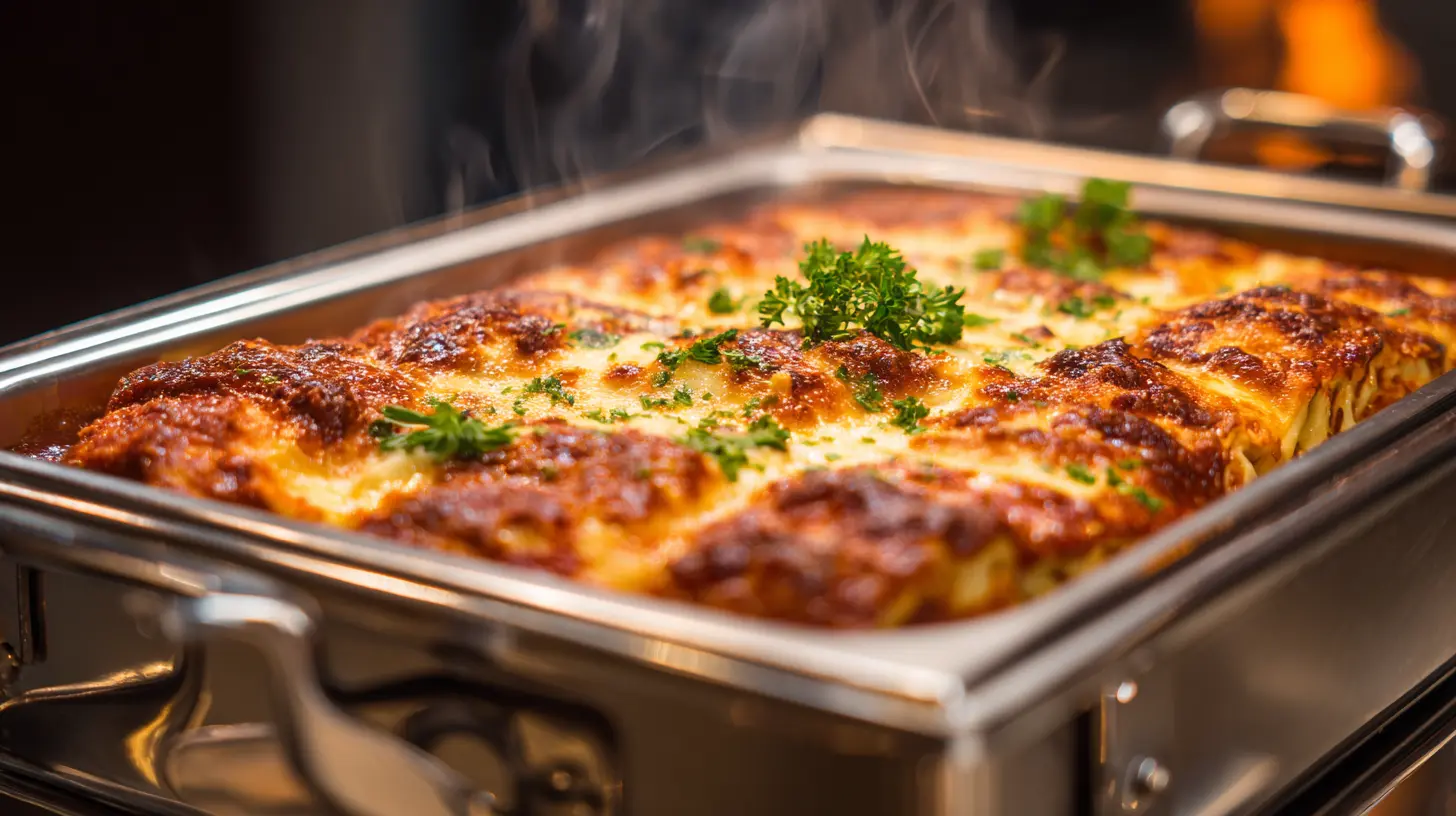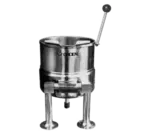
Classic Lasagna in a Hotel Pan: Bulk Recipe for Catering
Lasagna is one of those rare dishes that checks every box for foodservice professionals — comforting, scalable, cost-effective, and always a hit with guests. Whether you’re preparing lasagna for a crowd at a banquet, corporate event, or restaurant buffet, mastering this dish can anchor your catering menu year-round.
In this guide, we’ll show you how to make lasagna in bulk — with chef-tested techniques, commercial kitchen efficiency tips, and the equipment you need for consistent, restaurant-quality results.
Why Lasagna Works Perfectly for Catering
Few dishes hold as well or please as many palates as lasagna. It’s hearty, reheats beautifully, and can be portioned easily into trays. For caterers, lasagna tray catering delivers the perfect blend of convenience and presentation.
- Scalable: You can prepare components (sauce, pasta, cheese blend) in advance and assemble just before service.
- Transport-friendly: Layers stay intact during delivery or buffet holding.
- Customizable: Add proteins, seasonal vegetables, or regional flavors without changing your workflow.
- Profitable: Low food cost, high perceived value — guests see it as comfort food elevated.
How to Make Lasagna for a Crowd
Here’s how to prepare restaurant style lasagna efficiently in a commercial kitchen, using one full-size hotel pan (20 ¾” × 12 ¾” × 2 ½”). This yields about 20 to 24 generous portions — ideal for lasagna catering or buffet service.
Ingredients (1 Full Hotel Pan Lasagna)
For the sauce:
- 5 lb ground beef or Italian sausage (or a mix)
- 2 large onions, diced
- 3 lb canned crushed tomatoes
- 1 lb tomato paste
- 2 Tbsp minced garlic
- 2 Tbsp olive oil
- 1 Tbsp dried oregano
- 1 Tbsp basil
- Salt and black pepper to taste
For the cheese filling:
- 4 lb ricotta cheese
- 3 lb shredded mozzarella
- 1 lb grated Parmesan
- 4 large eggs
- Fresh parsley, chopped
Other:
- 4 lb lasagna noodles (par-cooked or no-boil type)
- Olive oil spray for layering
Preparation Steps
1. Prepare the Meat Sauce
In a tilting skillet or stock pot, brown the meat over medium-high heat. Add onions and garlic until softened. Stir in crushed tomatoes, tomato paste, herbs, and seasoning. Simmer 30–40 minutes, stirring occasionally.
Chef’s tip: Use a steam kettle or large stock pot for efficiency if making multiple pans at once — these tools hold steady heat without scorching.
2. Mix the Cheese Filling
In a large mixing bowl (or commercial planetary mixer using a paddle attachment), combine ricotta, eggs, Parmesan, parsley, and half of the mozzarella. Mix until smooth but not overworked — overmixing makes the filling dense.
3. Cook the Pasta
If using traditional lasagna noodles, boil in salted water until just flexible (about 6–7 minutes). Drain and coat lightly with olive oil to prevent sticking. No-boil sheets can go straight into the pan — just add a little extra sauce per layer.
4. Assemble in Hotel Pan
Spray the bottom of your hotel pan lightly with olive oil. Then:
- Bottom layer: Thin spread of sauce (to prevent sticking).
- Second layer: Noodles, overlapping slightly.
- Third layer: Ricotta mixture (about one-third).
- Fourth layer: Meat sauce, spread evenly.
- Repeat layers, finishing with noodles → sauce → mozzarella + Parmesan on top.
You’ll get about 3–4 layers, depending on noodle thickness.
Pro Tip: For catering lasagna, underfill slightly (¾ depth) to leave room for bubbling and ensure lids fit securely.
5. Bake
Cover tightly with foil. Bake in a convection oven at 350°F for 45–60 minutes, or until internal temperature reaches 165°F. Remove foil during the last 10 minutes for a golden-brown cheese crust.
If using a standard oven, increase bake time slightly (60–70 minutes).
6. Rest & Portion
After baking, rest the lasagna for at least 20–30 minutes before cutting. This allows the layers to set for clean slices — essential for professional presentation.
Use a heated holding cabinet or warming drawer to keep trays at serving temperature (140°F–150°F) without drying out.
Tips for Successful Lasagna Catering
1. Build in Layers of Flavor
Season each element — sauce, cheese, and noodles. In professional kitchens, subtle seasoning steps create depth that distinguishes restaurant style lasagna from home recipes.
2. Pre-Portion for Service
Use a hotel pan divider or score portions before reheating. Standard full pan yields:
- 12 extra-large pieces (entree size)
- 24 medium pieces (buffet size)
- 36 small pieces (tasting or lunch service)
3. Make Ahead for Efficiency
Lasagna actually improves overnight as flavors meld. Assemble the day before, refrigerate, and bake fresh for service.
4. Transport Like a Pro
For lasagna tray catering, cover tightly with foil and stack in an insulated carrier or heated transport cart. Use foil hotel pans for disposable service, or stainless pans for repeat use.
5. Keep It Hot Safely
At catering events, lasagna should be held at a minimum of 140°F. Use chafing dishes, electric food warmers, or portable holding cabinets to maintain temperature.
How to Make Restaurant Style Lasagna Stand Out
Guests can find lasagna anywhere — what sets yours apart is technique and finesse.
- Use a béchamel layer: Replace one cheese layer with white sauce for a creamy Italian texture.
- Add roasted vegetables: Zucchini, spinach, or eggplant lighten the dish and add color.
- Experiment with meats: Try ground veal, Italian sausage, or a beef–pork blend.
- Finish with fresh herbs: Sprinkle basil and parsley before serving for brightness.
For caterers, a visually appealing top layer (browned cheese, drizzle of red sauce, herbs) elevates even a buffet setting.
Equipment That Simplifies Large-Batch Lasagna
Professional results depend on reliable equipment. Here’s what makes lasagna catering efficient:
- Convection Oven: Ensures even browning across large pans.
- Steam Kettle or Stock Pot: Ideal for large sauce batches.
- Planetary Mixer: Speeds up cheese filling prep.
- Hotel Pans: Use full-size, 2½″ deep for standard lasagna; 4″ for thicker portions.
- Food Warmers / Holding Cabinets: Keep trays service-ready without overbaking.
- Refrigerated Prep Tables: Store sauce, cheese, and noodles at safe temps during assembly.
Every piece of equipment supports consistency, food safety, and faster turnaround during peak catering hours.
Storing and Reheating Leftover Lasagna
One reason lasagna is a catering favorite is its forgiving nature. You can reheat without compromising texture.
- To cool: Allow to rest uncovered for 20 minutes, then refrigerate uncovered until cold. Once chilled, wrap tightly.
- To reheat: Cover with foil, bake at 325°F for 30–40 minutes or until hot in the center (165°F).
- To freeze: Portion into squares, wrap individually, and freeze up to 2 months.
Frozen lasagna reheats best in convection ovens or combi ovens for balanced moisture and heat.
Final Thoughts
Mastering how to make lasagna for large groups isn’t just about feeding a crowd — it’s about delivering comfort and consistency at scale. With quality ingredients, precise layering, and dependable commercial equipment, you can serve the best lasagna recipe every time, whether in a restaurant, banquet, or off-site event.
A well-executed catering lasagna is a symbol of hospitality — hearty, familiar, and unforgettable. By perfecting your restaurant style lasagna, you turn a classic into a cornerstone of your catering success.





